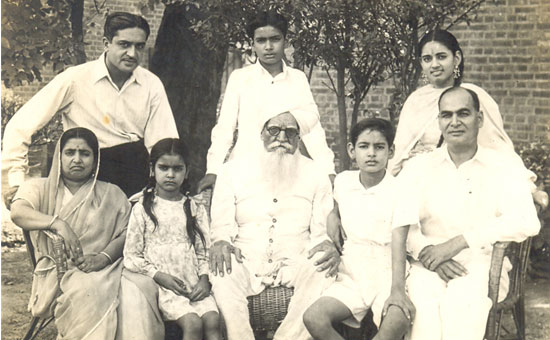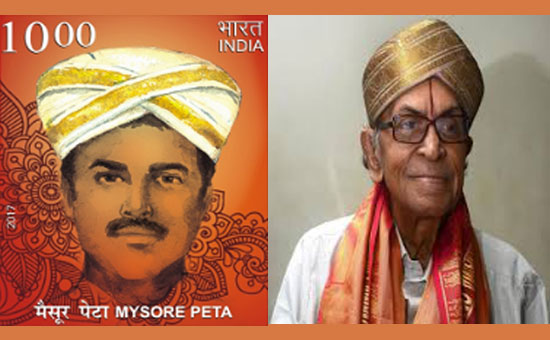- What is origin of the name Kaur? Is it a female counter to the name Singh? Why did Sikhs use the name Singh starting 1699? What were the names of wives of the Sikh Gurus? Why did the British insist on using the name Singh for Sikhs?
I
was very happy when the Indian Women Cricket Team won the 2025 World Cup, ably
led by Harmanpreet Kaur and Vice-captain Smriti M. Since Kaur is from Punjab
and Smriti from Maharashtra, the history buff in me recalled How Sikh and
Marathas had defeated the Afghans in the 18th century
Now
days, media refers to any Sikh woman as Kaur. Some said it is a name for Sikh
women whilst others said it is the equivalent of the male name Singh.
On Kaur Dr Satish Kapoor, historian,
educationist, author and editor of The
Khalsa: Subtratum, Substance and Significance 6 said, “It is the female version of Kumari for Sikhs, in common parlance. Guru Gobind Singh did not initiate any woman. Kaur derives from the Sanskrit word Kunwar, a prince.” Note that word Sikh is derived from the Sanskrit word Shishya.
In 6, Jasbir Singh Ahuja wrote, “At Anandpur Sahib, Guru Gobind Singh said that five baptised ones, would henceforward use their surnames with the epithet Singh (lion). In a similar way women and girls were given the common epithet kaur (lioness).” Pg. 43 So Guru Govind Rai became Guru Govind Singh. Note that concept of surnames in India was introduced by the British.
W.H. Mcleod wrote in Historical Dictionary of Sikhism, “All Amrit-dharis must add Kaur to their first name. The custom is also followed by Kes-dharis. The etymology of the word is uncertain. Most regard it as a female form of kumar, (prince) translating it as ‘princess’. Pg. 119
Earlier Singh meant Devotee 7. Today it means Lion.
Khushwant Singh wrote in History of Sikhs Volume 1, “Singh is derived from the Sanskrit word Simha meaning lion. A Sikh woman takes the surname Kaur on baptism. Kaur was also a common surname for Rajput women and means both a princess and lioness.” Pg 80. Rajput ladies, married and unmarried, put KANWAR after their name not Kaur said two Rajput lady friends.
Guru Govind Singhji did not baptise any women so the words
Singh and Kaur, were never declared simultaneously. Read on for details.
Since my Dadi was Sikh decided to deep dive on the
subject.
 San Jose Gurdwara, California is perhaps the most scenic one.
San Jose Gurdwara, California is perhaps the most scenic one.
The tradition of using Singh started
with the 10th Guru. What about earlier Gurus?
The earlier Nine Gurus did not use the name Singh. Their
wives names 8 were -
1. Wife of Guru Nanak Dev- Tripta
Devi. When one searches online Sulakshana appears. In Punjabi her name is Sulakhni.
2. Wife of Guru Angad Trehan - Khivi.
3. Wife of Guru Amar Das Bhalla - Mansa Devi.
4. Wife of Guru Ram Das - Bhani or Bibi Bhani.
5.
Wife of Guru Arjun - Mata Ramdevi (called Ramdei in Punjab) and Ganga ji.
6.
Wife of Guru Har Govind - Damodari ji, Nanki ji and Marwahi ji. Some say he had
two wives.
7.
Guru Har Rai (1644-1661) and 8. Guru Har Kishan (1661-1664) have not left much
of history behind them.
9.
Wife of Guru Tegh Bahadur - Mata Gujri.
10.
Wife of Guru Govind Singh - Jito ji, Sundari or Sundar Kaur and Sahib Devi
/Kaur (Sahib Devan).
I referred to our Family Tree. Dadi’s brother was Attar Singh Bhalla. Their mother’s name outside the family home was Bishen Devi, also referred to as Bishen Kaur. Dadi passed away in 1970 so her mother might have been born around the 1870’s.
 My great grand-father, with turban, in centre of the pic. Sitting left was Dadi.
My great grand-father, with turban, in centre of the pic. Sitting left was Dadi.
Kumari is used normally before marriage and Devi after. The full name of captain Harmanpreet Kaur is Harmanpreet Kaur Bhullar. Based on my working in Punjab in the late 1980’s say that Kaur seems more like a post 1990 phenomena to identify Sikh women.
Today, many Sikh names can be boy or girl for e.g. Gurpreet so Singh and Kaur help know. Another name is my late father's name AMRIT.
Anyway, what was the starting point to
men using the word Singh?
It started with the 10th Guru in 1699. We need
to know about the birth of Khalsa by Guru Govind Singhji.
At a congregation held at Anandpur on 30 March 1699, after a stirring speech the Guru flashed his sword, and said ‘that every great deed was preceded by equally great sacrifice; the Holy Sword would create a heroic nation after supreme sacrifice. He then asked if anyone in the gathering would offer his head in the services of God, Truth, and Religion.”
The five heads that rose were Dayaram from
Lahore, Dharamdas from Hastinapur near Delhi, Sahib Chand from Bidar in
Karnataka, Himmat Chand Kahar from Puri in Odisha and Mohkam Chand Chihimba
from Gujarat.
They were designated the Five “Beloved Ones” and termed “Khalsa” (i.e. Purified). Post purification they added Singh against their names. See Pic 2 of my album on Keshgarh Sahib, Anandpur for e.g. they were Bhai Daya Singh Ji. Today Singh means Lion. However, original meaning was different.
According
to Volume 7 of the History & Culture
of Indian People, Singh means devotee. 7
Pg. 319 Today name Singh is associated with essentially the fighting classes of North India esp. in modern day Punjab, Haryana, Himachal and Uttar Pradesh. Perhaps the meaning Lion is because the British introduced the concept of Martial Races and Sikhs were the prime candidates for inclusion because of their fighting skills and they did not take part in the1857 Mutiny. 11
According to Khalsa tradition, its
followers had to sport the five Ks i.e. Kesh (long hair), Kangha (comb), Kirpan
(sword), Kara (steel bracelet), Kachcha (knickers). Turbans helped them manage
the hair.
Guru Govind Singh’s did not initiate women into Khalsa so the question of having a female equivalent name to Singh does not arise.
So, is wearing Turban essential to Sikhs?
According to this 2019 article in The Week, “The 16th Generation descendant of Guru Nanak, Baba Vikramaditya Bedi does not sport the 5Ks because his great grand- father believed 5Ks were only for time of war.”
How did the British emphasise that the 5k’s were essential to Sikhs?
Post the 1857 Mutiny, the British reduced the number of Bengali soldiers and replaced them with
loyal Sikhs and Punjabi Muslims.
It however, insisted that only Kesadhari Sikhs could join the army i.e. those who sported the five k's. It was part of their policy to
divide Punjab into Hindu and Sikh. The name Singh was an implied part of the five k’s.
A Pagdi is worn across India, though not always
with long hair like the Sikhs do. Read Turbans
of India
 Pagdi Mewar style, Udaipur.
Pagdi Mewar style, Udaipur.
 Mysore Peta.
Mysore Peta.
Personal Insights
A Punjabi shares personal insights, “Khatris and Aroras use the epithet of Singh or go without it. The former are called Sikhs. The distinction continues in a different milieu, and the wedge is increasing. The tradition of making one male member of family a Sikh was popular till recently. In our family, my youngest uncle was ordained a Sikh nearly 84 years back. He got married into a Sikh family but his two sons have Hindu names and they do not wear a turban. My in-laws are non-turbaned Kohli, but my uncle is turbaned Malhotra.”
Hope this explains origin of the name Kaur. As always am happy to stand corrected. Three Cheers to Harmanpreet Kaur Bhullar and Team. Bharat needs more of NARI SHAKTI. I must add that am a big fan of Harmanpreet K Bhullar.
Also read and
References
1.
Brief write up on
all Ten Sikh Gurus – only 10th Guru has word Singh after his name.
2.
Why was the First
Son made a Sikh
3.
Why do Sikhs wear
Turbans
4.
Is Modern Day
Sikhism a colonial construct
5.
To read all
articles on Sikh History
6.
The Khalsa: Subtratum, Substance and
Significance publixhed Centre of Historical Studies, Lyallpur Khalsa College,
Jalandhar
7. The History and Culture of Indian People by the Bharatiya Vidya Bhavan Volumes 7 and A History of the Sikhs by Khuswant Singh.
8.
Names of Wives of
Sikh Gurus
9.
How
the British divided Punjab into Hindu and Sikh
10.
Caste
in Sikhs
11.
Historical Dictionary of Sikhism